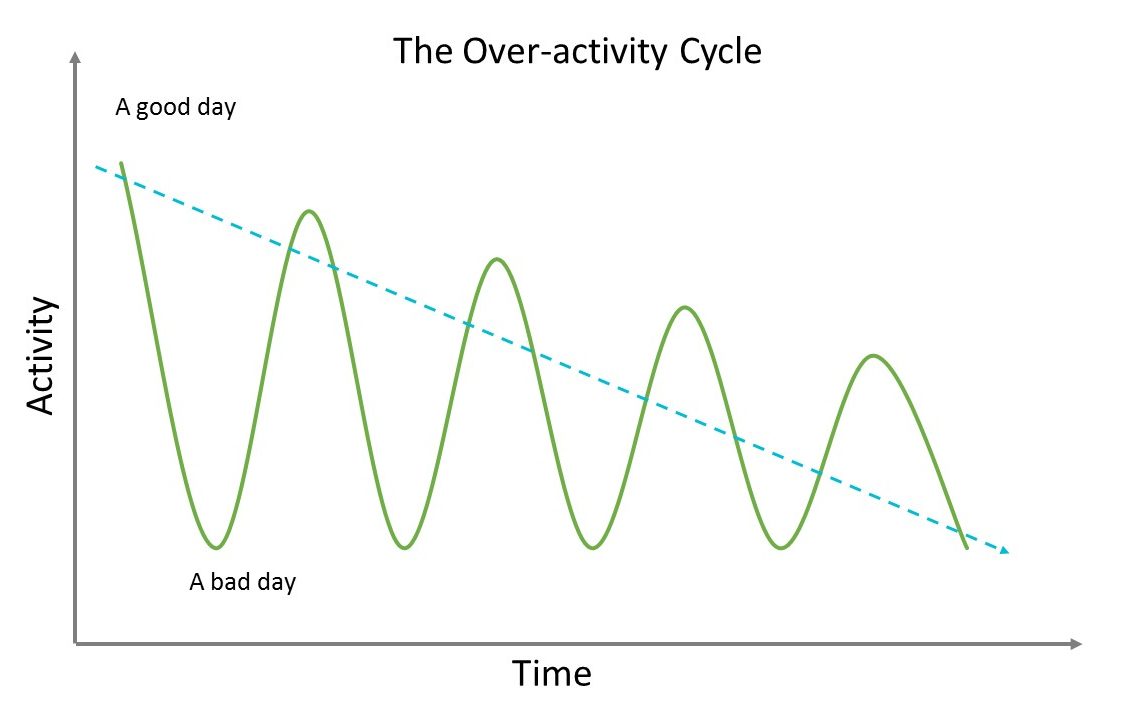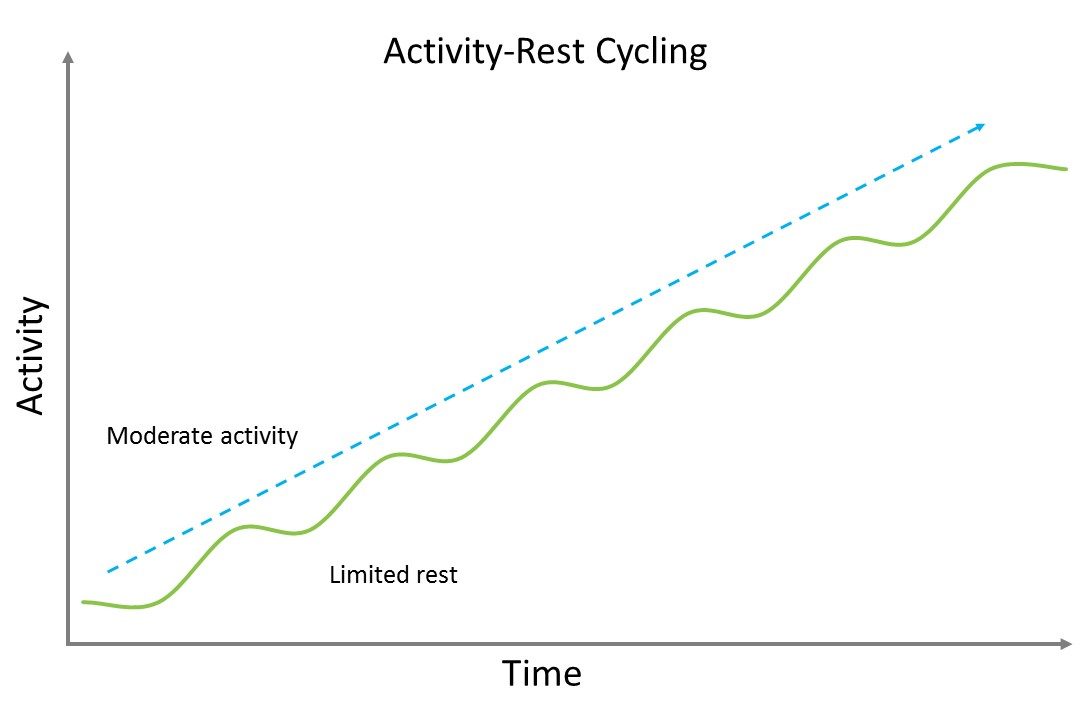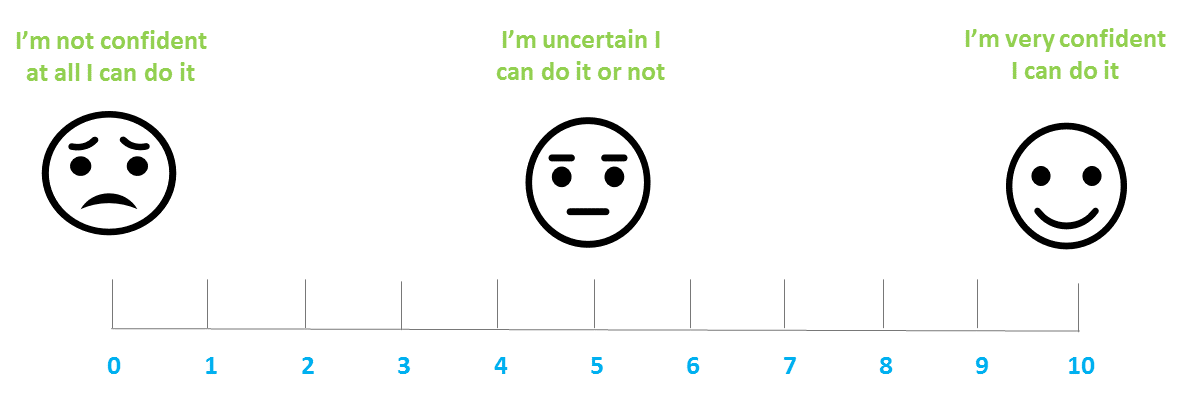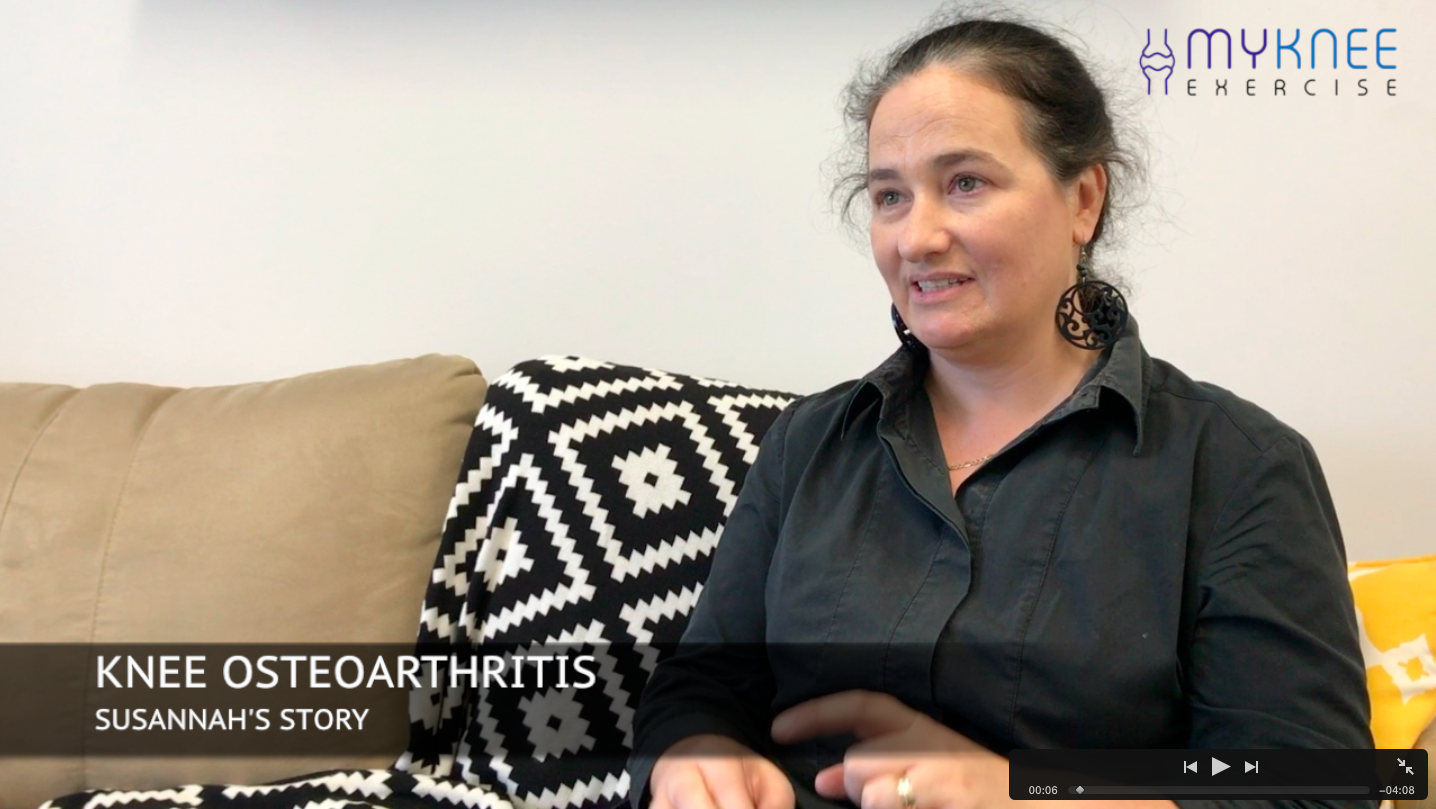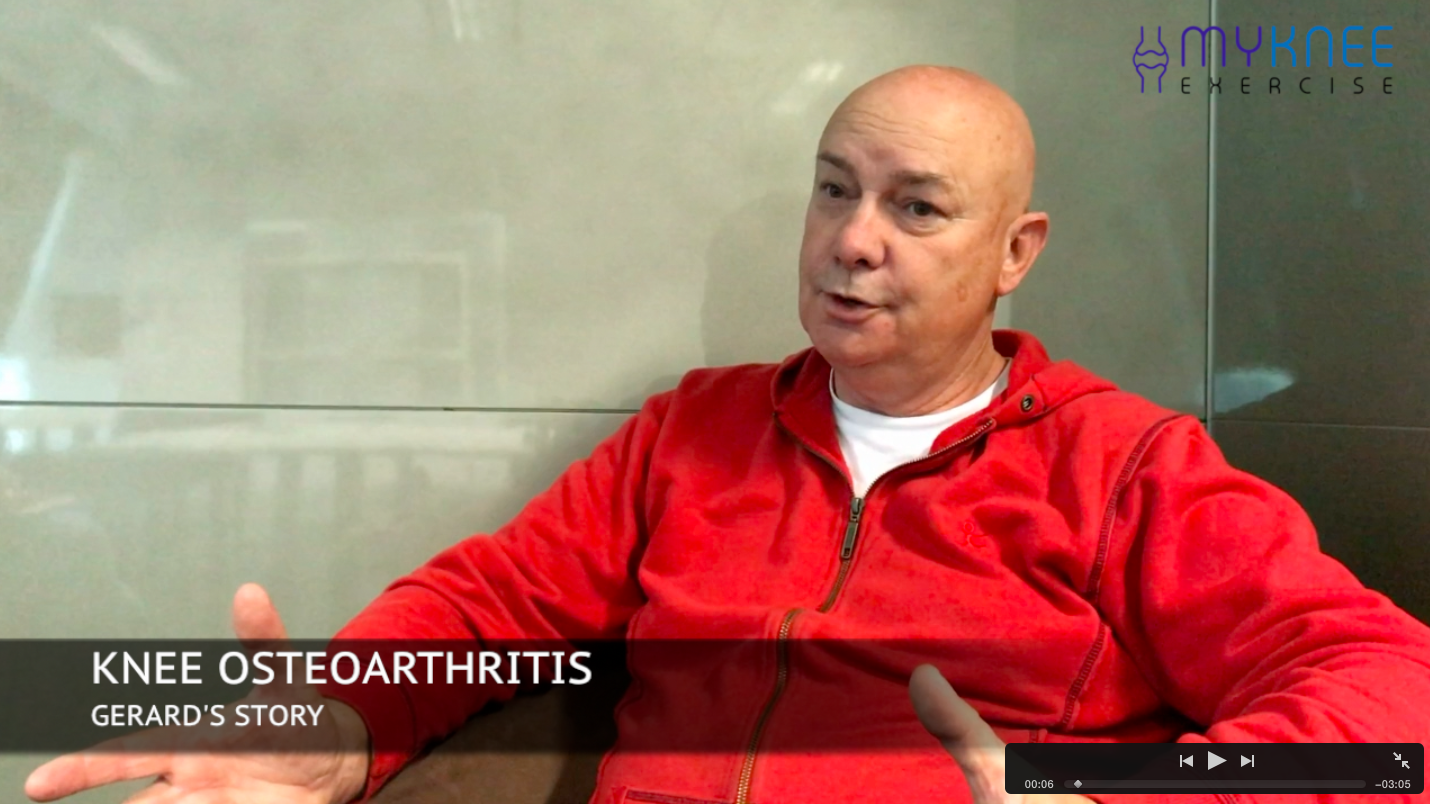My Knee Activity
Aim to increase your physical activity over the next 6 months.
Starting your My Knee Strength program is the first step. The second step is to increase your overall physical activity.
Read each section for tips to help you be more physically active to reduce knee pain.
Physical activity has many benefits, including:
![]() keeps joints healthy and moving
keeps joints healthy and moving
![]() maintains fitness
maintains fitness
![]()
improves mood
![]()
maintains weight
![]()
reduces the risk of health conditions that can make managing knee pain harder (obesity, heart conditions, diabetes)
![]()
can lower feelings of social isolation if done with other people
.
Despite the benefits, people with painful knees tend to be less active
Scientific evidence shows people with knee osteoarthritis are less active than people of the same age who don’t have osteoarthritis.
A lot of people with osteoarthritis worry activity could increase their pain. To avoid pain increasing people often change the things they do. For example, you might use the elevator and avoid the stairs. You might decline to try new activities. You might spend more of your day sitting and resting. The fear of being in pain is often enough to stop someone being active all together. Being less active can become a habit. It can be a hard habit to break. The best way to start is to make small changes to your daily routine. Even small changes can have a positive impact on your knee and overall health.
Read more in My Knee Activity. Find ways to gradually increase your activity. Get back to doing active things you enjoy. Or discover and try new ways to be active.
Over the next 6 months aim to slowly increase your physical activity.
Being physically active regularly can be hard. But, doing any physical activity is better than doing none. If you currently do no physical activity, start by doing a little. Gradually build up to the recommended amount.
How much physical activity is recommended?
For knee and general health people should spend some time on most days being physically active. It’s recommended everyone do 20-60 minutes, 3-5 days a week of moderate activity. But, if moderate activity is too difficult, light activity is still beneficial. You also don’t need to do 20-60 minutes of activity all at once. Bouts of activity 10 minutes at a time works too!
How to tell if you’re doing light, moderate or vigorous activity?
The easiest way to tell is to notice how hard you’re breathing during an activity.
Light activity = you’re breathing at a normal speed and depth
Moderate activity = you’re breathing harder than normal but can still speak in sentences
Vigorous activity = you are out of breath and can only speak one word at a time
What are some physical activities you can try?
It’s completely up to you! There are many things you can do to be physically active. The important thing is to find something you enjoy doing.
Here are some ideas of different types of activities you can try.
Structured activities: These are activities where you set aside dedicated time to exercise.
Ideas to try: Swimming, Cycling, Jogging, Walking groups, Golf, Water aerobics, Dancing.
Incidental activities: These are active things you do as part of your daily life.
Ideas to try: Gardening, Housework, Playing with small children, Riding a bike to work, Walking to the shops, Getting off the bus a stop earlier, Parking at a far end of shopping centre parking lot.
Daily step count: Many people find the easiest way to increase general physical activity is to track how many steps they’re walking each day. This might work for you too.
Read the next section to find out more about tracking your daily steps.
References
Australian Government. Department of Health. Australia’s Physical Activity & Sedentary Behaviour Guidelines for adults aged 18-64 years. http://www.health.gov.au. Accessed July 2018.
Australian Government. Department of Health. Australia’s Physical Activity & Sedentary Behaviour Guidelines for Older Australians (65 years and older). http://www.health.gov.au. Accessed July 2018.
World Health Organization (WHO). Global recommendations on physical activity for health 2010. http://whqlibdoc.who.int/publications/2010/9789241599979_eng.pdf. Accessed January 2018.
6000 steps each day, or more, is recommended for people with knee osteoarthritis.
A great way to keep physically active is to track your daily steps. Aim to do at least 6000 each day.
How to track your steps
To track your steps there are a range of devices you can use, depending on your budget. Devices include a pedometer, Fitbit, Apple watch. Visit a sport store, department store or look on-line to see what is available. You can also use your mobile phone to count steps. For example, Apple iPhones have “Health”, an app that records daily steps.
Tips when getting started:
To start: For one week wear your step counter each day. Record how many steps you take on average each day. That’s your starting point.
To increase your steps: Try increasing by 1000 daily steps each week. Try a five-minute walk. Park the car further away at the shops. Get off the bus a stop earlier.
Example: If you start with 3000 steps per day, you’ll aim to do 4000 steps each day the following week. If you manage that, the following week you’ll aim to do 5000 steps each day. And so on. The aim is to reach 6000 – 10 000 steps each day to maintain general fitness.
Read the next section to learn about activity pacing. It’s an important skill to help avoid overdoing activities and increases in pain.
References
White, D. K., Tudor-Locke, C., Zhang, Y., et al (2014). Daily walking and the risk of incident functional limitation in knee osteoarthritis: an observational study. Arthritis Care Res (Hoboken). 66(9):1328-36. doi: 10.1002/acr.22362
World Health Organization (WHO). Global recommendations on physical activity for health 2010. http://whqlibdoc.who.int/publications/2010/9789241599979_eng.pdf. Accessed January 2018.
Pace yourself. Increase your activity gradually over time.
When you increase your activity it can be easy to get carried away and do too much too soon. This is a trap we call the ‘over-activity cycle’. It’s a common trap we all fall into.
But the ‘over-activity cycle’ can and should be avoided. The first step is to learn what it is so you know what to avoid. The second step is to replace the ‘over-activity cycle’ and instead adopt the ‘activity-rest cycle’. The ‘activity-rest cycle’ is a safe and effective way to pace your activity and avoid increased knee pain.
The ‘over-activity cycle’ and why to avoid it
The ‘over-activity cycle’ is an easy habit to fall into. It’s common, we all do it. It’s where we ‘let pain be our guide’, when we stop and rest only when pain becomes too strong we can’t go on.
In the short term, resting only when you really hurt makes sense. But over the long term this can lead to avoiding activity to prevent pain. Avoiding activity isn’t a good thing. It causes muscle weakness and reduced physical fitness. Muscle weakness and reduced fitness makes it harder to be active without pain. So, things that you could do before that didn’t hurt now do. As a result you might want to avoid even more activity! It’s a vicious cycle.
Look at the ‘over-activity cycle’ diagram. Think of when you might have used this approach.
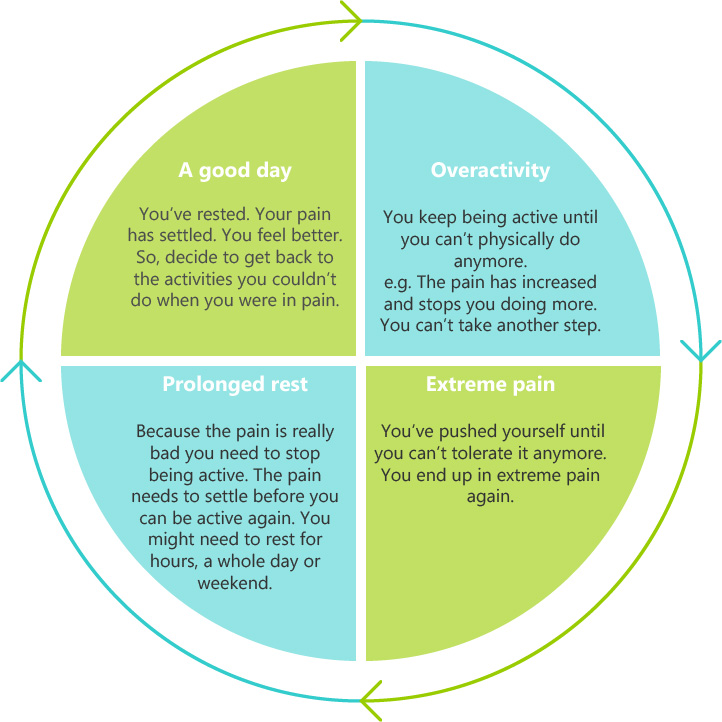
The ‘activity-rest cycle’ and why to use it
The ‘activity-rest cycle’ is where you consciously break your activities up. You pace yourself. Instead of doing a long session of activity, you break it up. Do shorter sessions of ‘moderate activity’. Take small breaks or ‘limited rest’ in between. The aim is to avoid the ‘over-activity cycle’, severe pain and forced prolonged rest.
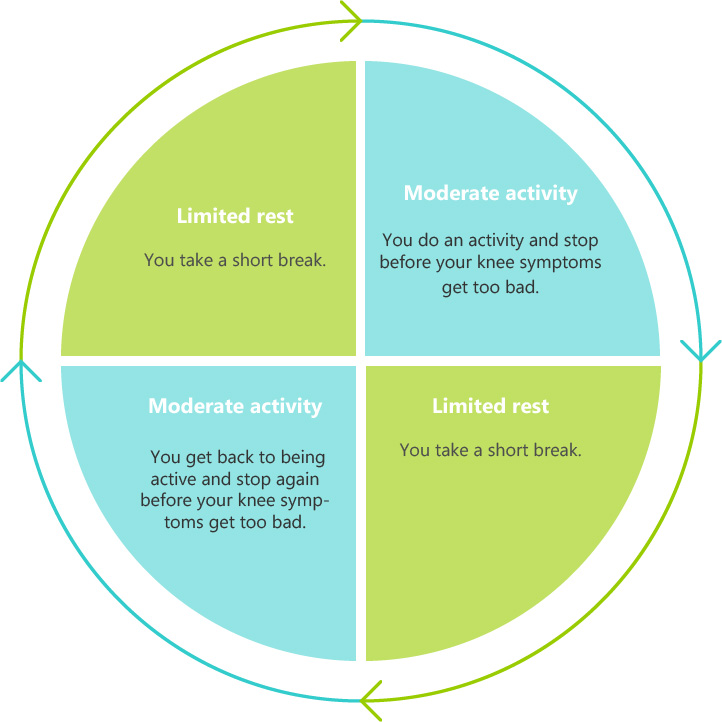
The goal isn’t to rest more or take lots of breaks, it’s in fact, the opposite. In the long run it’s a way to increase activity. It’s about finding the balance between activity and rest. It’s being moderately active so you avoid severe pain and forced rest. Because you’ll be avoiding severe pain and forced rest, over time, you’ll be able to gradually do more.
Activity pacing can be hard, especially if you’re use to overdoing it. Some people find keeping a written record useful. If you’d like help using activity pacing, try using this Activity Pacing Record.
Read the next section for tips to help increase your physical activity. Follow the steps to make a physical activity plan.
References
Butler, D. S., & Moseley, G. L. (2003). Explain Pain: Noigroup Publications.
Keefe, F. J., Kashikar-Zuck, S., Opiteck, J., Hage, E., Dalrymple, L., & Blumenthal, J. A. (1996). Pain in arthritis and musculoskeletal disorders: the role of coping skills training and exercise interventions. J Orthop Sports Phys Ther, 24(4), 279-290.
Marietta, B., Louise, A., & Rachel Megan, H. (2004). Activity Pacing in Chronic Pain Management: One Aim, but Which Method? Part One: Introduction and Literature Review. British Journal of Occupational Therapy, 67(10), 447-452.
Make a plan to increase your physical activity.
Increasing activity can be hard. People find making a physical activity plan and setting a goal can help keep them on track. It might work for you too.
When making your plan keep in mind the ‘activity-rest cycle’. Avoid making a plan the falls into the ‘over-activity cycle’
To make a plan follow these 5 steps.
Click on each![]() to read more.
to read more.
Here are some things people do to make regular physical activity easier. You might find them useful too.
- Do physical activity at the same time as another task. Like the saying goes – two birds one stone.
- Make physical activity social. Be active with a friend or family member.
- Set a reminder in your phone.
- Give yourself rewards. Set targets to reach. Reward yourself each time you reach a target.
- A holiday or sickness can get in the way of regular physical activity. If this happens, set a date when you’ll resume your activity.
- Consider putting yourself first for once. Take time to be physically active. You’ll be more capable of looking after others if you take some ‘you’ time more often.
- Write your physical activity plan down. Use the template below.
- Keep a logbook to monitor your progress. Access your logbook in the next section: Record Your Progress
Next click on the video for more tips to help you start exercise.
Download and print the Physical Activity Template. Use it to record your physical activity plan. Physical Activity
Physical Activity
Plan Template
 Physical Activity
Physical Activity
Plan Template Example
Physical activity logbook
Keeping a record of what physical activity you plan to do and what you actually do can help keep you on track. You might like to try it.
Use a logbook to record your weekly physical activity and your daily steps, if you’re keeping track of these.
Download and print this physical activity log book to use.
 Physical Activity
Physical Activity
Log Book
Hear more from our My Knee Exercise champions.
Starting strength exercise and increasing overall physical activity has helped hundreds of people with knee pain. It really is the best medicine.
Next click on the videos to hear more from Susannah and Gerard.
Here they talk more about their experience with knee pain and increasing activity.

